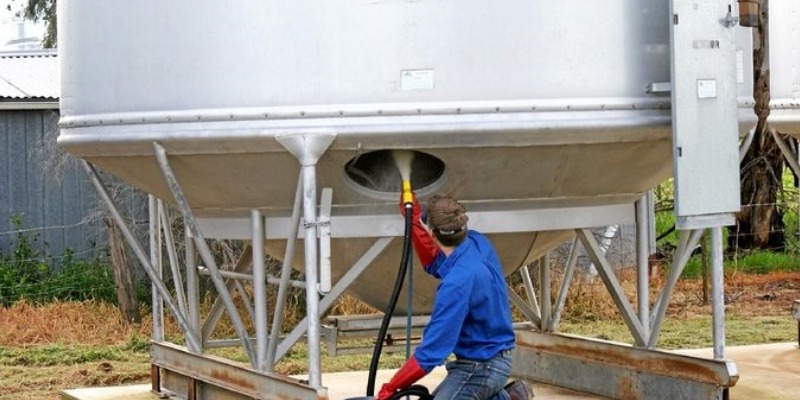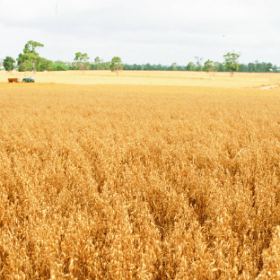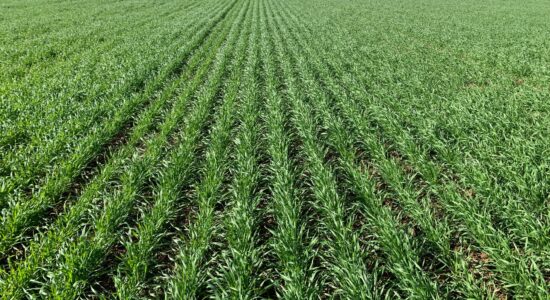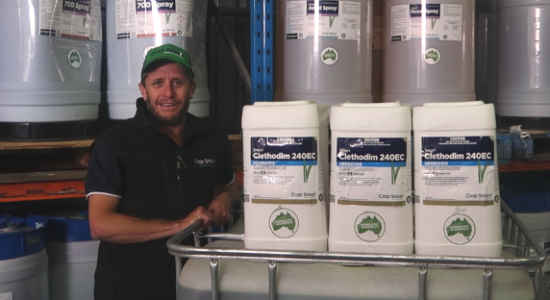
A Guide to Seed Storage and Treatment
With harvest underway in many areas, a lot of you will be thinking about storing and treating your grain for next year’s seed.
It is important to keep in mind a number of factors when undertaking this process, as these can ultimately have a major effect on next year’s grain yields. Grain moisture and temperature, storage hygiene, fumigation, grain sample quality and seed treatment options are some of the main influences on high germination and good early vigor for next season’s crops. It’s also worthwhile considering your options for grain protectants, before analysing options for storage and treatment.
Grain Protectants
Protectants are used to reduce the risk of insect infestations; they are a preventative method that should be applied at harvest time as grain goes into storage. Most protectants provide protections for 3 – 9 months and they control the early stages insects (eggs, larvae, etc). Protectants are often used if your planting seed from on farm, storing grain in non-sealable storage and a few other cases. Some options from the GRDC on grain protectant choices are below;
- Conserve Plus™ Grain Protector: 100 g/L spinosad, 100 g/L s-methoprene. Used in combination with a compatible OP product such as chlorpyrifos-methyl (ReldanTM), or fenitrothion.
- K-Obiol® EC Combi, synergised grain protectant: 50 g/L deltamethrin, 400 g/L piperonyl butoxide. Used in combination with an OP partner, e.g. chlorpyrifos-methyl (ReldanTM), or fenitrothion.
For recommendations on application for the two options above, head here.
Another option for protection is Fenitrothion & IGR which is approved for use on all cereal grains (including malting barley) and has been found to be effective against organphosphate and pyrethroid resistant insect strains. It’s important with all grain protectants to ensure that spray equipment is calibrated for correct dose rates to acheive maximum grain coverage.
Grain Moisture
The temperature of the grain when stored and moisture content can have a large impact on the viability of the grain. Grain is a good insulator so generally, without proper aeration fans, the temperature the grain is initially stored at will remain reasonably constant until it is taken out. Grain of high temperature and high moisture content will have a much higher risk of poor germination and seed viability than grain stored at lower levels. Not only this, but higher grain temperatures increase the reproduction rates of many stored grain insects.
Aim for moisture content of below 12% and stored temperatures less than 20 degrees Celsius.
Storage Hygiene
Ensure that the equipment you are using to load or treat your grain, and the storage you are using is clean from any old grain. This old grain is a breeding haven for grain storage insects and is one of the most frequent ways storage insects infect newly stored seed.
Fumigation
Phosphine is a common practice to fumigate grain for stored grain insects. The problem however is that poorly fumigated grain doesn’t control all of the insects, often only killing adult insects resulting in re-infestation from eggs and larvae at a later date. This also increases the likely hood of developing phosphine resistance.
Make sure you use a pressure tested seed silo to fumigate grain in as any silo that cannot be pressure sealed will have high likely hood of not killing insects at all life cycles. Also ensure that you use the correct rate of phosphine for the size of your silo and amount of grain you are storing and that you fumigate for the proper time period. As a general rule, proper fumigation requires 10-17 days.
Grain Sample Quality and Seed Treatment Options
Any impurities in a grain sample such as dust, stubble or shriveled grain will result in poor seed treatment application due to the product sticking to these impurities and not on the grain for use when sowing. For this fact ensure that all seed is properly cleaned and that you are only left with high quality grain to be treated with the treatment required.
When choosing which treatment is correct for your grain, factor in potential seed-borne, soil-borne and foliar diseases that pose a threat to your area and also to the seed variety that you are treating, as different varieties have different resistances to diseases. Keep in mind that seed-borne diseases such as loose and covered smut can only be suppressed or controlled with a seed treatment, meaning there is no control method as a foliar if the disease expresses itself in crop.
The Smart Agro








